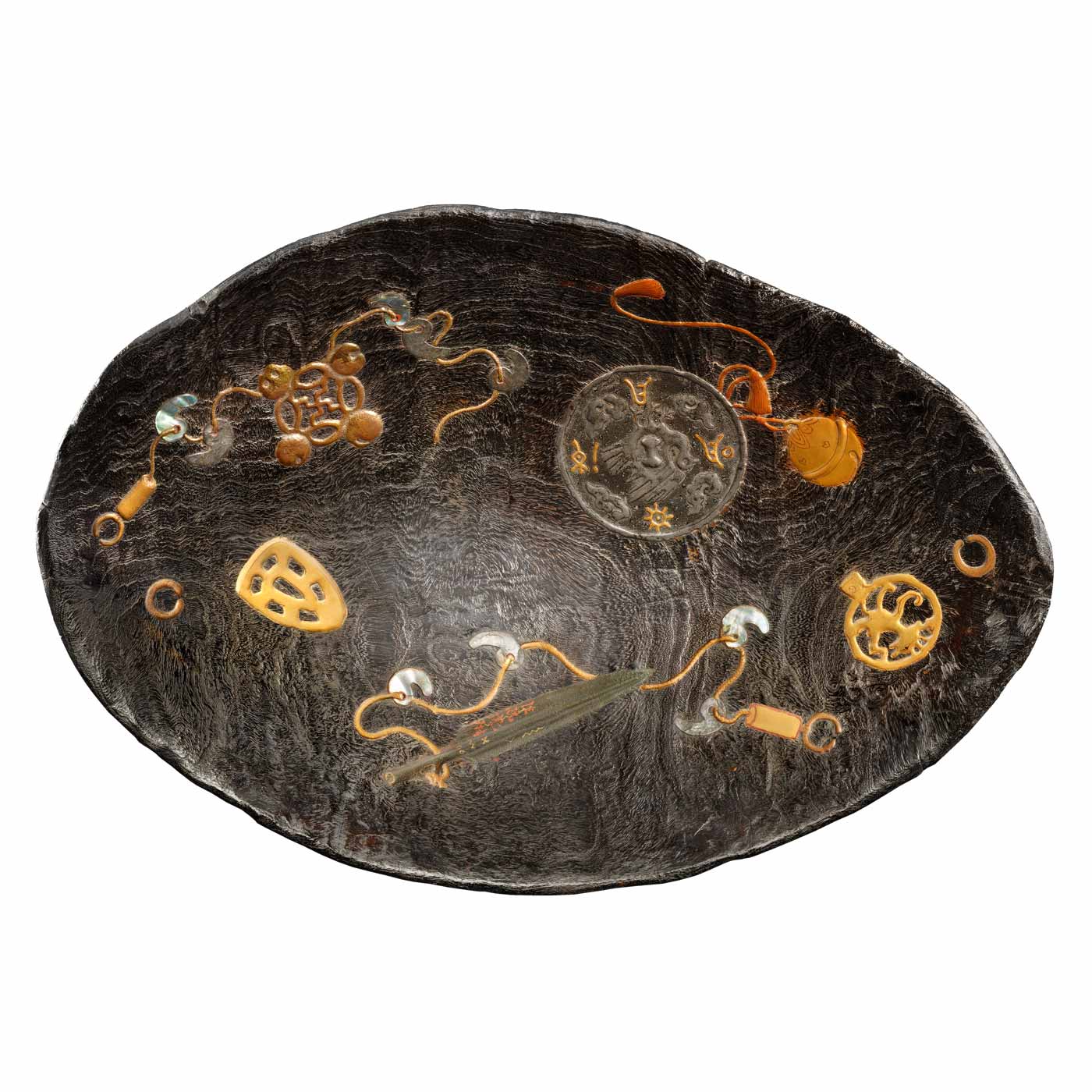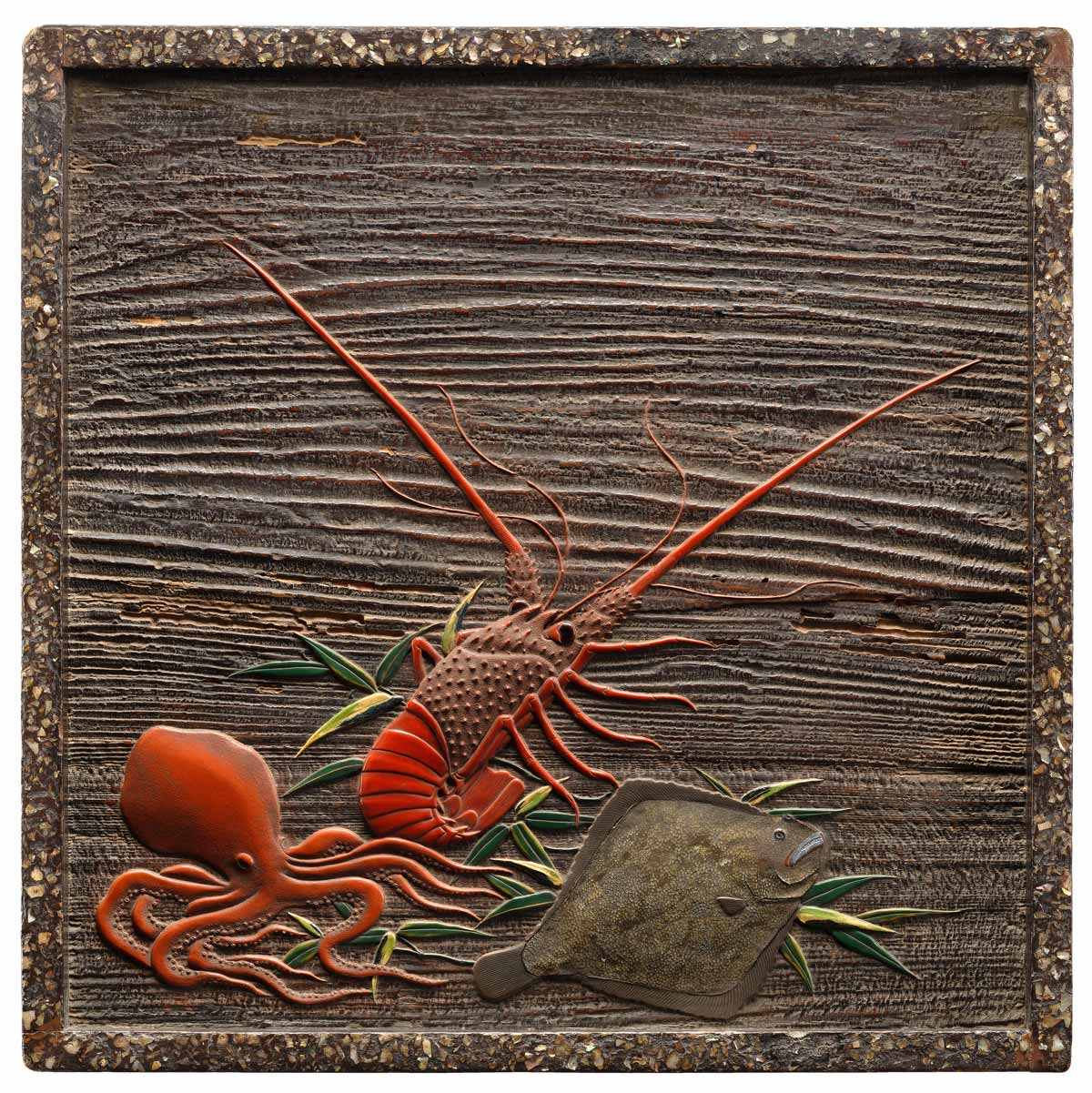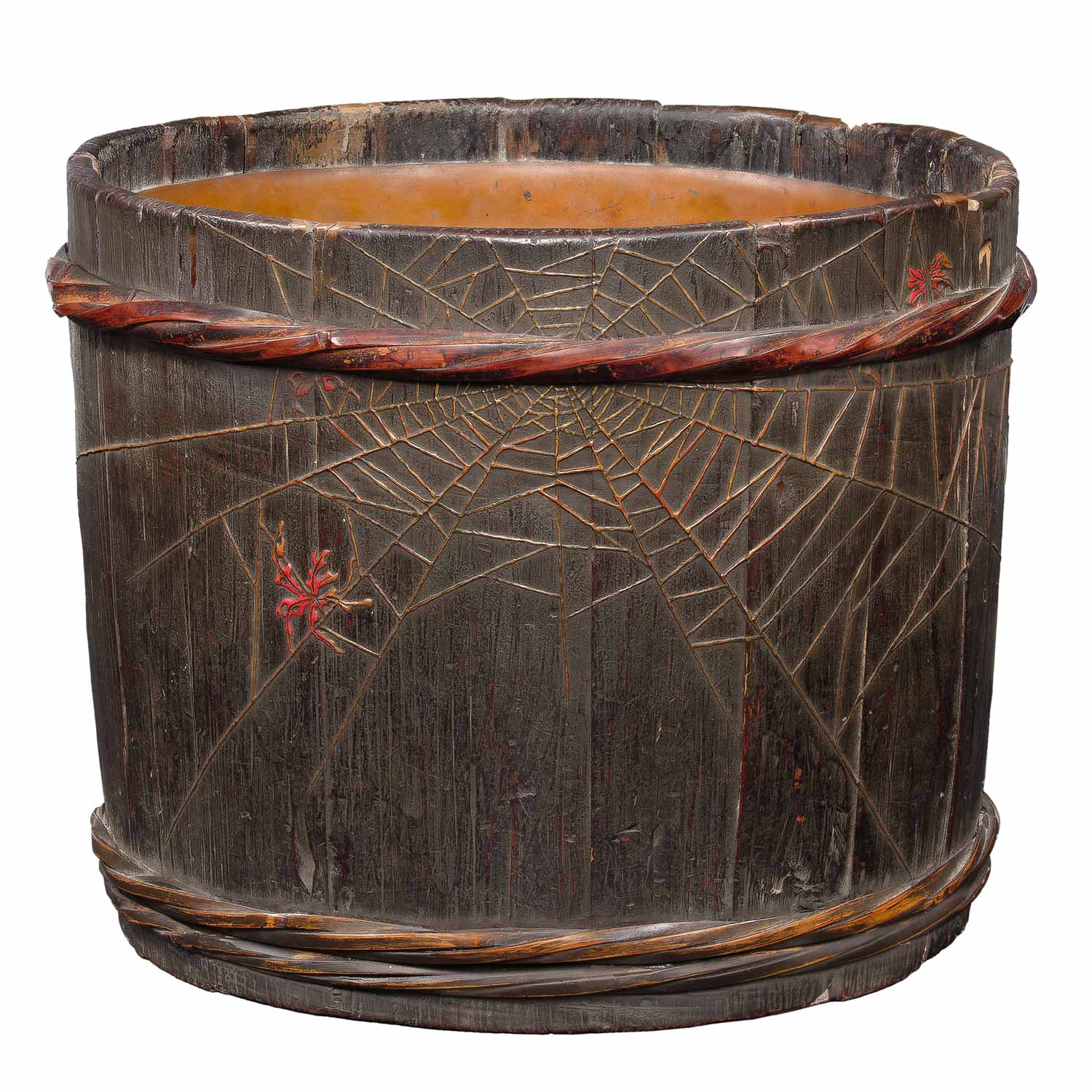Kashibon
Lacquer
- Contact Us
-
Material
Wood, maki-e lacquer in the style of Kōrin, inlay of mother-of-pearl (raden), lead and silver
-
Size
6.5 (h) x 37 x 26cm
-
Period
Meiji period (1868-1912)
-
Box
Awasebako (collector's box)
Description
Korin maki-e mokusei kashibon
Candy tray decorated with ancient symbols of power
Ancient symbols of power are scattered on the surface of a natural rough wood. Designs include mother-of-pearl and lead magatama beads, a silver mirror with gilt calligraphic designs, an engraved spear head, the gilt head of a staff, and more. The collector's box is titled Kōrin maki-e mokusei kashibon (wooden sweets tray decorated with lacquer designs in the style of Kōrin). A spectacular work of art combining the magnificent technique of Ogata Kōrin (1658-1716) and the appreciation of wabi-sabi in the degraded wooden surface.
The magatama (曲玉 / 勾玉) is a characteristic ornament, initially, of the protohistory of Japan. Its shape evokes a pierced fang, a bear claw, a comma, a 9 or sometimes a fetus. It is usually made of amber, stone, jade or even glass.


